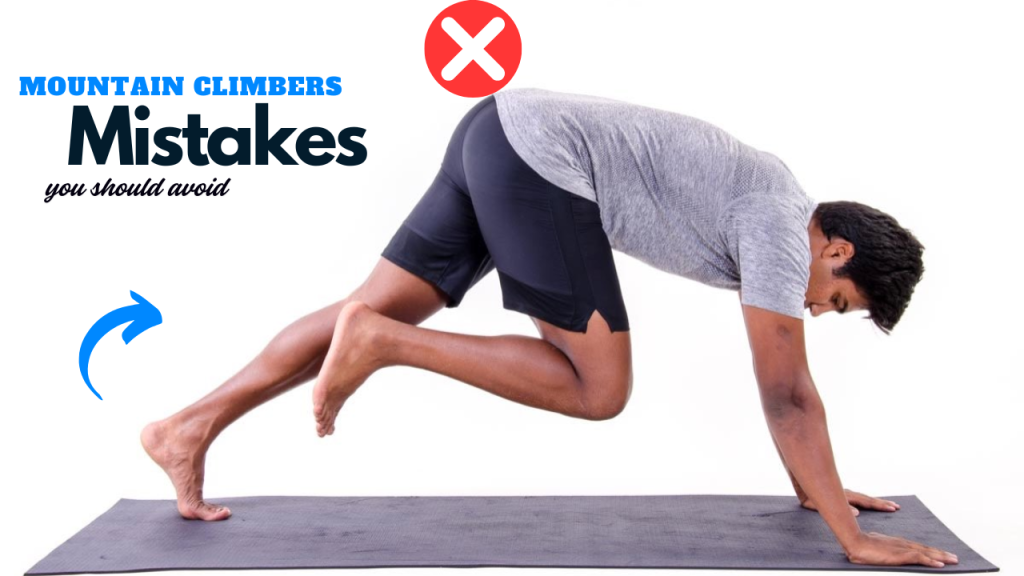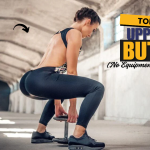Ever feel like you’re huffing, puffing, and sweating through mountain climbers—yet your core still isn’t stronger, and the results are MIA?
You’re not alone.
Mountain climbers are one of the most effective full-body bodyweight exercises—but only when done correctly. They torch calories, build core stability, and improve cardiovascular endurance in seconds. Yet, for many fitness enthusiasts, this move becomes an energy-draining flail-fest with zero payoff.
Let’s break the myths, pinpoint the common errors, and help you fix these 3 major mistakes so you can finally turn those sweaty seconds into solid gains.

Mistake #1: Letting Your Hips Hike Too High or Sag Too Low

Myth: “If I move faster, I burn more fat.”
Truth: Poor form ruins effectiveness—speed means nothing if your body is misaligned.
When your hips hike up like you’re in a downward dog—or sag like a hammock—you’re taking the work away from your core and putting unnecessary strain on your back and shoulders.
Why This Matters:
Mountain climbers are meant to engage your core, not your lower back or just your legs. Misaligned hips make the move easier, but less effective.
Fix It:
- Keep your body in a straight line from shoulders to ankles.
- Engage your glutes and brace your core as if someone’s about to punch your stomach.
- Visual cue: Pretend there’s a tray of water on your back. Don’t spill it.
Interesting Fact:
A study in the Journal of Strength and Conditioning Research found that exercises like mountain climbers, when performed with core engagement, activate up to 25% more abdominal muscles than traditional crunches.
Mistake #2: Half-Repping or “Tapping” Your Knees

Do you know?
Many gym-goers only bring their knees halfway in—thinking they’re doing reps faster. But that’s just cheating your results.
Mountain climbers aren’t just about moving your feet; they’re about controlled knee drives that challenge your lower abs, hip flexors, and stabilizers.
Why This Matters:
Shortening your range of motion limits core engagement and makes the exercise more cardio than strength-based.
Fix It:
- Bring each knee as close to your chest as possible.
- Think of “driving” the knee forward, not “tapping” the floor.
- Slow down if you must—form always trumps speed.
Bonus Tip:
Try pausing briefly when your knee is closest to your chest. This increases time under tension and boosts core activation.
Mistake #3: Forgetting to Breathe or Going on Autopilot

Common myth: “Breath control isn’t important for fast-paced exercises.”
Wrong.
Holding your breath (or shallow breathing) during mountain climbers reduces oxygen flow, spikes your heart rate, and causes early fatigue. Many people also go into “autopilot” mode, mindlessly pumping their legs with no focus on muscle engagement.
Why This Matters:
Breathing helps regulate intensity, supports core activation, and maintains endurance—especially during high-rep sets.
Fix It:
- Inhale as one knee drives in, exhale with the next.
- Practice rhythmic breathing patterns, especially during high-intensity circuits.
- Stay mentally present—focus on how each rep feels.
Interesting Insight:
According to sports physiologists, intentional breathing during movement improves performance by up to 15% in endurance-based exercises. That could be the difference between a mediocre core workout and a transformational one.
Bonus: Turn Mountain Climbers Into a Power Move
Once you’ve nailed the form, level up your mountain climbers with these simple but effective tweaks:
- Cross-Body Climbers – Target obliques by driving your knees toward opposite elbows.
- Slow-Mo Climbers – Slowing it down increases time under tension for deep core work.
- Slider Climbers – Place towels or sliders under your feet for a smooth, resistance-rich version.
- Tabata Rounds – 20 seconds on, 10 seconds off for 4 minutes = insane calorie burn.
Final Thoughts
Mountain climbers should be a game-changer, not just a filler in your workout routine. If you’re making these common mistakes, not only are you wasting effort—you could be risking injury.
Fix your form. Breathe with purpose. Move with intention.
Because when done right, mountain climbers can sculpt your abs, burn stubborn fat, and elevate your fitness game faster than most equipment-based exercises.
Remember:
Results come from how you do the movement—not how fast you finish it.
Now go climb your way to stronger abs—the right way.
Frequently Asked Questions (FAQs)
Are mountain climbers good for burning belly fat?
Yes, mountain climbers are excellent for burning belly fat when combined with a healthy diet and other forms of cardio and strength training. They engage multiple muscle groups and elevate your heart rate, which boosts calorie burn and promotes fat loss.
How long should I do mountain climbers to see results?
Beginners can start with 3 sets of 20–30 seconds. For visible results, aim for 30–60 seconds per set with good form, 3–5 times a week, as part of a balanced fitness program.
Why do my wrists hurt when doing mountain climbers?
Wrist pain can occur due to poor hand placement or lack of wrist mobility. Ensure your hands are directly under your shoulders and distribute weight evenly. You can also do the move on fists or elevated on a bench to reduce pressure.
Can I do mountain climbers every day?
Yes, you can, but recovery is important. Daily mountain climbers are fine if you’re not overtraining and maintaining proper form. However, listening to your body and alternating with other exercises is key for long-term progress.
What muscles do mountain climbers target?
Mountain climbers primarily target your core, shoulders, triceps, quads, and hip flexors. They also activate your cardiovascular system, making them a total-body conditioning move.
Do mountain climbers help with posture?
Indirectly, yes. Stronger core and shoulder stability from mountain climbers can contribute to better posture by reinforcing spinal alignment and reducing muscular imbalances.
Is speed or form more important in mountain climbers?
Form is far more important. Fast, sloppy reps can lead to injury and reduce effectiveness. Controlled, aligned movement with full knee drive and engaged core yields better results.
Are mountain climbers safe during pregnancy?
Always consult with your healthcare provider. In early pregnancy stages, modified versions (elevated surface, slow pace) may be safe, but avoid them later in pregnancy due to abdominal pressure.





